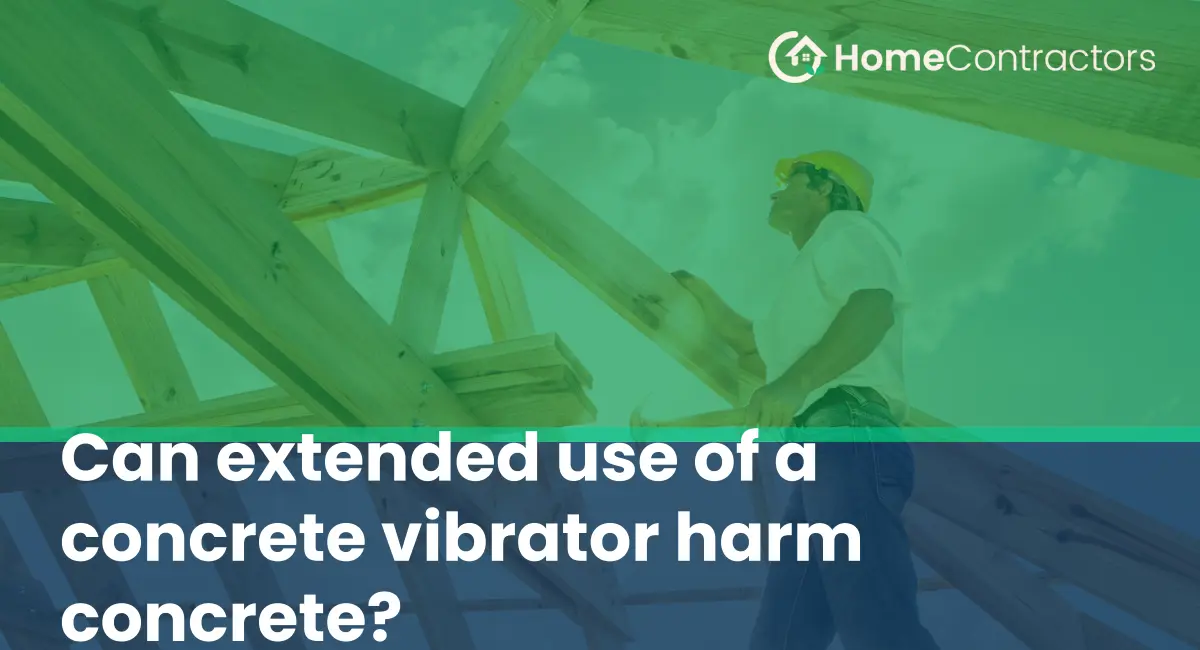Concrete is a widely used construction material due to its durability and strength. During the construction process, it is often necessary to use a concrete vibrator to ensure proper compaction and remove air bubbles. However, there have been concerns about the potential harm that extended use of a concrete vibrator might have on the concrete itself. In this article, we will explore whether prolonged use of a concrete vibrator can indeed cause damage to concrete and discuss ways to mitigate any potential risks.
Understanding concrete vibration
Concrete vibration is a process used to consolidate freshly poured concrete, which helps to remove air voids and increase its density. This consolidation is often achieved using concrete vibrators. These vibrators are handheld or machine-operated devices that create high-frequency vibrations, allowing the concrete mix to flow more freely and settle uniformly.
The benefits of using concrete vibrators
Using a concrete vibrator offers several advantages in the construction industry. It helps to improve the strength and durability of the finished concrete structure by eliminating voids and air pockets. Through proper consolidation, the concrete becomes more resistant to cracking and has enhanced structural integrity. Additionally, it allows for better compaction around reinforcing steel, ensuring proper bond strength between concrete and steel reinforcement.
Understanding the potential risks
While concrete vibration offers numerous benefits, there are concerns about the potential harm it may cause to the concrete if used for an extended period. The primary concern lies in the excessive vibration imparted to the concrete, which can lead to segregation of ingredients, weakening of the mix, and even structural damage.
Segregation of ingredients
Extended and intense vibration can lead to segregation of the concrete mix, resulting in an uneven distribution of aggregates, cement, water, and admixtures. This can weaken the concrete’s overall strength and compromise its durability, possibly leading to future structural issues.
Weakening of the mix
Excessive vibration can also cause excessive bleeding of the mix, leading to a reduced water-cement ratio. This can result in a weaker concrete mix as the necessary water needed for hydration of cement is lost, adversely affecting the final strength and quality of the hardened concrete.
Potential structural damage
In certain situations, prolonged use of a concrete vibrator on a specific area of the concrete can lead to structural damage. High-frequency vibrations, when concentrated in one area, may cause cracking or fracturing. This is particularly relevant in thinner concrete sections or areas where reinforcement is inadequate to resist the induced stresses.
Mitigating the risks
Although extended use of a concrete vibrator can potentially harm concrete, there are ways to mitigate these risks and ensure the integrity of the finished product.
Proper equipment selection
Choosing the right type of concrete vibrator for the specific project is crucial. Consider factors such as the size and depth of the concrete pour, slump requirements, and site accessibility. Using vibrators with frequency and amplitude control can facilitate better control over the vibrations imparted, reducing the risks associated with excessive vibrations.
Monitoring vibration intensity and duration
Regularly monitoring the vibration intensity and duration during the consolidation process is essential. Using a calibrated instrument, construction professionals can ensure that the vibrations remain within acceptable limits specified by industry standards or project specifications.
Proper technique and spacing
Adhering to proper vibrating techniques and maintaining the correct vibrator spacing helps in achieving uniform compaction without excessive stress concentrations. Concrete vibrators should be inserted vertically and systematically in a grid pattern, ensuring even distribution of vibrations throughout the concrete. Avoiding prolonged exposure to one area and moving the vibrator methodically can help prevent localized damage.
The extended use of a concrete vibrator can potentially harm concrete if not properly managed. However, when utilized correctly with appropriate equipment, maintaining the correct technique, and adhering to recommended practices, concrete vibration offers significant benefits without compromising the integrity of the structure. Construction professionals should always be mindful of potential risks and take necessary precautions to ensure the longevity and quality of the concrete they work with.
